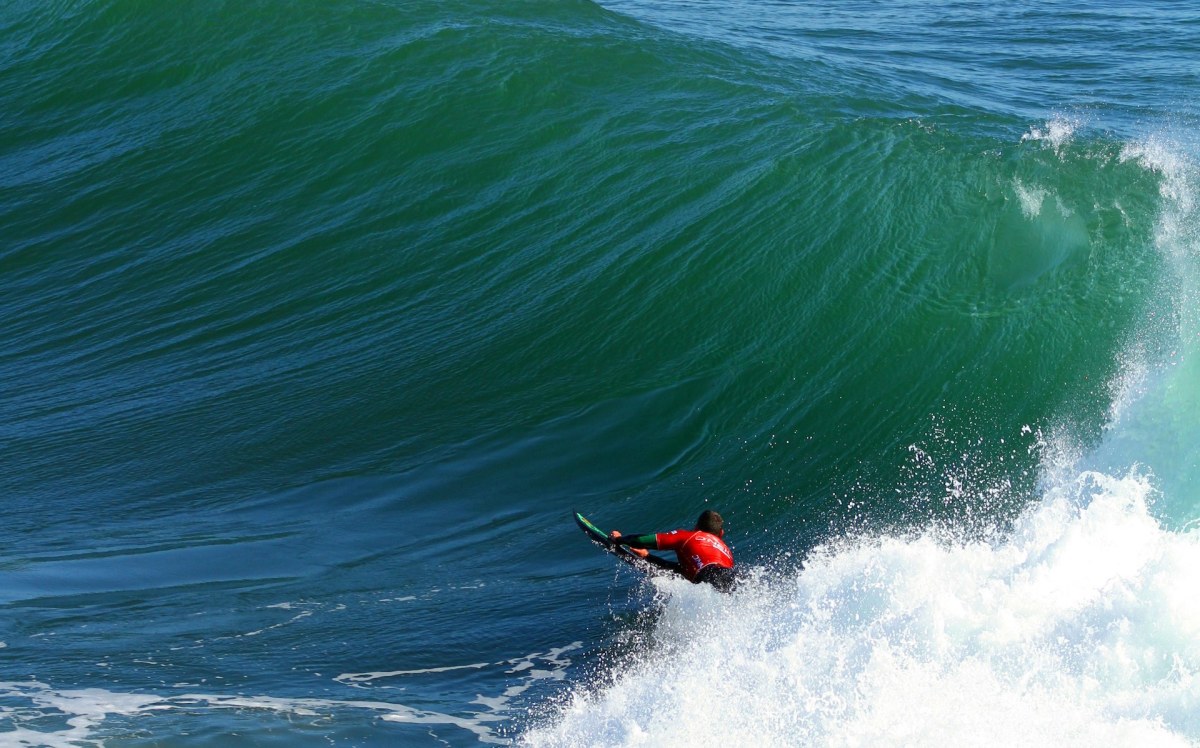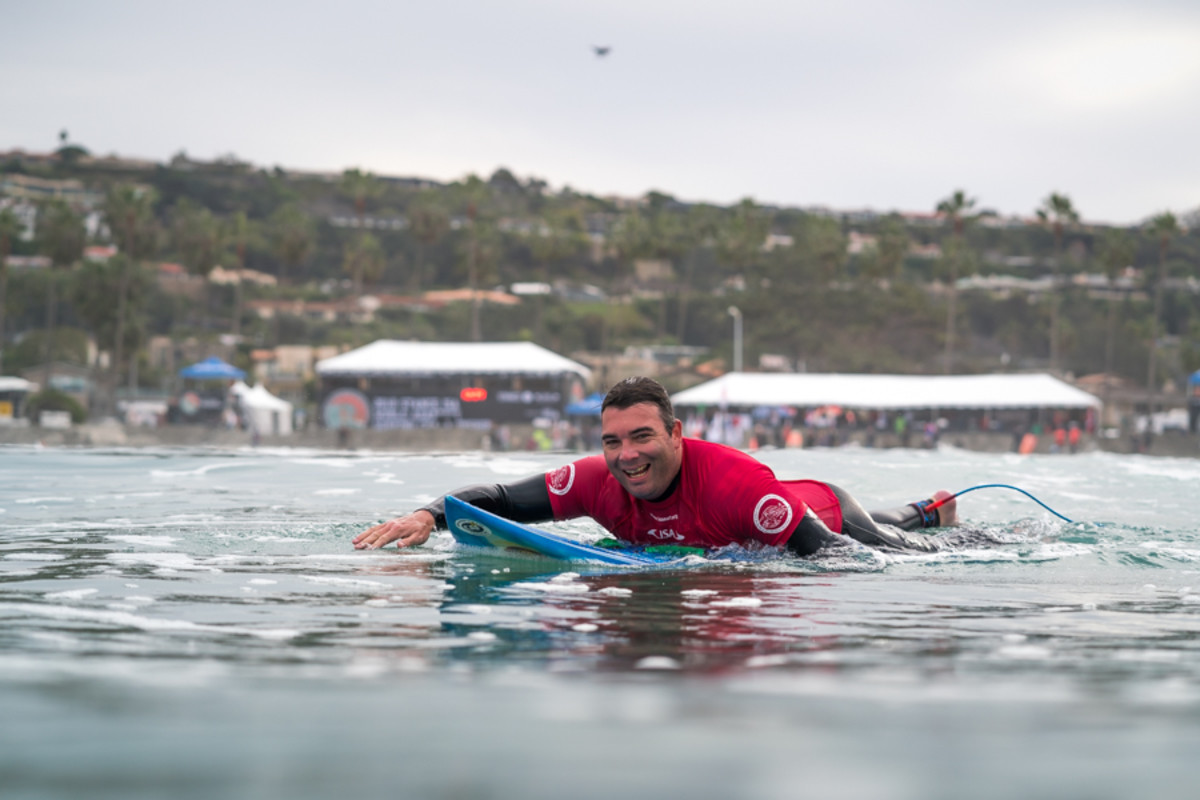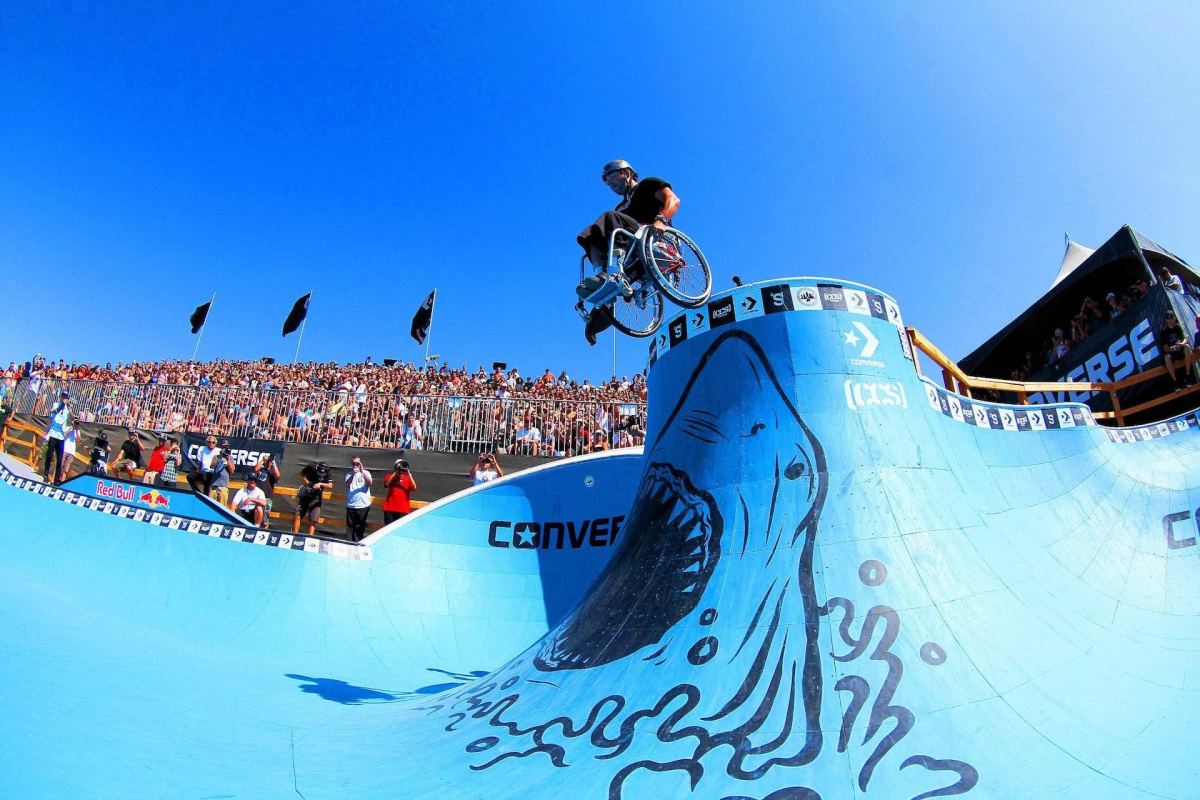Ever heard of the saying, two more, minus one? In action sports, it’s a shorthand workaround when you’re pushing yourself and about to finish big—that is, to never utter the potentially self-destructing words of “last try” or “one more.” Never.
As Christiaan Bailey jinxed it: “My famous last words were, ‘One last trick.’”
Filming for the storied Santa Cruz Skateboards company in 2006, Bailey made the statement and then blew out his knee, suffering compression fractures on two vertebrae. Then a professional skateboarder and three-times national champion surfer, the accident left Bailey paralyzed from the waist down—life changed forever.
“I don’t trip about it, though,” explains Bailey. “It might sound strange, but it was the best thing to ever happen to me … I wouldn’t change it for anything in the world.”
Growing up in Santa Cruz, Calif., where he earned the nickname Otter in surf lineups such as Steamer Lane, Bailey was as core as athletes came in the worlds of surf and skate. Today, he is no less committed.
Bailey became the first paralyzed surfer to ride two of world’s most infamous waves: Mavericks and Pipeline. Mavericks is known for breaking at gigantic sizes ranging between 25-60 feet on its face, while Pipeline is recognized as the proving grounds for professional surfers as well as the world’s deadliest wave claiming more lives than any other.
Over the past 14 years, Bailey has worked closely with a surfboard shaper to develop the perfect board for his body to surf in the prone position. In addition to board design, Bailey uses ankle straps with magnetics to keep his feet together and snap into place on the back of his custom boards. He also customizes his board selection to particular waves depending on how many turns he’ll be making. For the case of Mavericks, Bailey also utilizes a partner on a jet ski to tow him in to the massive waves at about 40 mph. On typical, mortal-surfer waves, Bailey has developed a technique to duck-dive, paddling out alongside everyone else.

Now 38, Bailey is also making a name for himself in international competition. With four individual silver medals at the International Surfing Association (ISA) World Adaptive Surfing Championships, he also claimed a bronze, silver and a gold that he is currently defending for the Team division along with his USA teammates. Winning the team gold came as a surprise and honor for Bailey, who serves as its captain and sits on its board of directors.
Next up for Bailey and Team USA: the March 11-15 ISA World Para Surfing Championships in La Jolla, Calif.—retitled from prior year’s as an ‘adaptive surfing’ championship.
“While it may seem superficial to some who are not in the know or in the industry,” Bailey explains, “the change in title is meant to reflect the overall Paralympic movement and ISA’s seriousness in getting it recognized as a Paralympic sport. The term para is short for parallel, which means a sport is operating in parallel with its able-bodied component.”
Since Bailey’s life-altering accident, he’s been showing people exactly what he is capable of. Embracing an opportunity to inspire has in turn influenced countless others to hop on a board themselves. And now Bailey can enjoy the larger momentum with these ISA moves.
“Not many people can say they were in on the ground floor of a sporting movement, I definitely feel blessed to have this opportunity,” Bailey says of the sport’s progress, the change in event title a key strategic forward step in surfing’s inclusion in the Paralympic program.

That personal outreach beings with the co-founding of the Ocean Healing Group in 2007, where Bailey put himself on the front lines of encouraging others, “helping kids carve the ‘Dis’ out of disability.” Then he signed up to travel the world to surf and ride his wheelchair in skateparks as part of expression sessions for marquee contest series such as the World Surf League and Coastal Carnage.
By 2010, Bailey’s message was being well heard. “Team Extreme” invited him to ride alongside fellow wheelchair skater Aaron Fotheringham to showcase their talent and sport (aka WCMX) as part of the Vancouver Paralympics Opening Ceremony. In 2013, organizers approached Bailey once again: this time to help with the creation and conception of a true world championship.

“Alex Reynolds from the ISA reached out with the idea of creating an adaptive surfing world championship,” Bailey explains. “It is a blessing to be able to help our community and light the torch for adaptive surfing to possibly become part of a Paralympic movement.”
The ISA is recognized as the world governing authority for surfing by the International Olympic Committee. Later this year, surfing will make its official debut as an Olympic sport as part of the Tokyo 2020 Games. Meanwhile, para surfing continues to work through the application and approval process to join subsequent Paralympics, which is entirely separate from the Olympic Games. As it sits now, Los Angeles 2028 would be the first opportunity for para surfing to officially be included, as the Paralympic events for the Paris 2024 Games have already been finalized.
“At the end of the day it is a phenomenal movement and a phenomenal experience that we have all been gifted,” says Bailey. “I just can’t thank the ISA enough for giving our sport the opportunity to eventually join the Paralympics. It is going to be a beautiful thing one day when we all roll out for the Opening Ceremonies. I just hope I am still competing when that does happen.”
Watch Bailey and Team USA compete in the 2020 ISA World Para Surfing Championships live, March 11-15 online at isasurf.org, and follow him on Facebook and Instagram @insta_otter.
from Men's Journal https://ift.tt/2GTMKsO
via IFTTT







0 comments:
Post a Comment